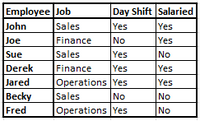FabCon is coming to Atlanta
Join us at FabCon Atlanta from March 16 - 20, 2026, for the ultimate Fabric, Power BI, AI and SQL community-led event. Save $200 with code FABCOMM.
Register now!- Power BI forums
- Get Help with Power BI
- Desktop
- Service
- Report Server
- Power Query
- Mobile Apps
- Developer
- DAX Commands and Tips
- Custom Visuals Development Discussion
- Health and Life Sciences
- Power BI Spanish forums
- Translated Spanish Desktop
- Training and Consulting
- Instructor Led Training
- Dashboard in a Day for Women, by Women
- Galleries
- Data Stories Gallery
- Themes Gallery
- Contests Gallery
- QuickViz Gallery
- Quick Measures Gallery
- Visual Calculations Gallery
- Notebook Gallery
- Translytical Task Flow Gallery
- TMDL Gallery
- R Script Showcase
- Webinars and Video Gallery
- Ideas
- Custom Visuals Ideas (read-only)
- Issues
- Issues
- Events
- Upcoming Events
The Power BI Data Visualization World Championships is back! Get ahead of the game and start preparing now! Learn more
- Power BI forums
- Forums
- Get Help with Power BI
- Desktop
- attribute slicer based on multiple columns
- Subscribe to RSS Feed
- Mark Topic as New
- Mark Topic as Read
- Float this Topic for Current User
- Bookmark
- Subscribe
- Printer Friendly Page
- Mark as New
- Bookmark
- Subscribe
- Mute
- Subscribe to RSS Feed
- Permalink
- Report Inappropriate Content
attribute slicer based on multiple columns
I have a report with 3 columns of attributes that I would like to combine into one multi-selectable chiclet-style slicer, since they are all somewhat similar ways to filter the data. The first has three values, the other two are Yes/No fields. Both of the Yes/No fields are such that there would never be a reason to focus on the "No" values, only the "Yes" ones. Here is an example similar to what my data looks like.
Right now, I have 3 chiclet slicers. If using my example data, the first has "Job" and has three chiclets for "Sales", "Finance", and "Operations". The other two each have two chiclets for "Yes" and "No". As I mentioned, there isn't even a need to have the "No" options, and having to use 3 chiclet slicers is cluttering up my report (This is a really large dataset with several other attributes to filter down as well).
I want to have one slicer where the user can select multiple options. What I envision would be a slicer titled "Empl Type", with buttons for "Sales", "Finance", "Operations", "Day Shift", and "Salaried". I've asked around amongst the other engineers I work with, and no one's figured out how to make this work.
If there isn't a way to do so, does anyone have an idea for at least removing the "No" options from the two "Yes/No" slicers? I could then set up the report with the three slicers so that they sort of look like just one.
Solved! Go to Solution.
- Mark as New
- Bookmark
- Subscribe
- Mute
- Subscribe to RSS Feed
- Permalink
- Report Inappropriate Content
Couldn't figure out exactly how to do it like I thought I wanted, but the end result works great!
I left as three separate columns, with a single character designating the type. I set the two "Yes/No" columns from my query to either have the value, or be null. Then, I created three new tables with the short characters used in my main data table, along with "prettified" names for use in the slicers. I set the relationships to crossfilter both ways, and created three slicers, but grouped them together so they looked like they belonged together. Creating the extra tables eliminated buttons showing for both "Yes" and "No", and now it will either filter it to the equivalent of the "Yes" answers, or not filter that column at all.
- Mark as New
- Bookmark
- Subscribe
- Mute
- Subscribe to RSS Feed
- Permalink
- Report Inappropriate Content
How about creating a new column and filter against this column?
Column = IF('Table'[Day Shift]="Yes"&&'Table'[Salaried]="Yes",'Table'[Job]&"--"&"Day shift"&"--"&"Salaried","Other")
- Mark as New
- Bookmark
- Subscribe
- Mute
- Subscribe to RSS Feed
- Permalink
- Report Inappropriate Content
Couldn't figure out exactly how to do it like I thought I wanted, but the end result works great!
I left as three separate columns, with a single character designating the type. I set the two "Yes/No" columns from my query to either have the value, or be null. Then, I created three new tables with the short characters used in my main data table, along with "prettified" names for use in the slicers. I set the relationships to crossfilter both ways, and created three slicers, but grouped them together so they looked like they belonged together. Creating the extra tables eliminated buttons showing for both "Yes" and "No", and now it will either filter it to the equivalent of the "Yes" answers, or not filter that column at all.
- Mark as New
- Bookmark
- Subscribe
- Mute
- Subscribe to RSS Feed
- Permalink
- Report Inappropriate Content
Helpful resources

Power BI Dataviz World Championships
The Power BI Data Visualization World Championships is back! Get ahead of the game and start preparing now!

| User | Count |
|---|---|
| 70 | |
| 45 | |
| 43 | |
| 36 | |
| 23 |
| User | Count |
|---|---|
| 196 | |
| 125 | |
| 105 | |
| 77 | |
| 56 |




